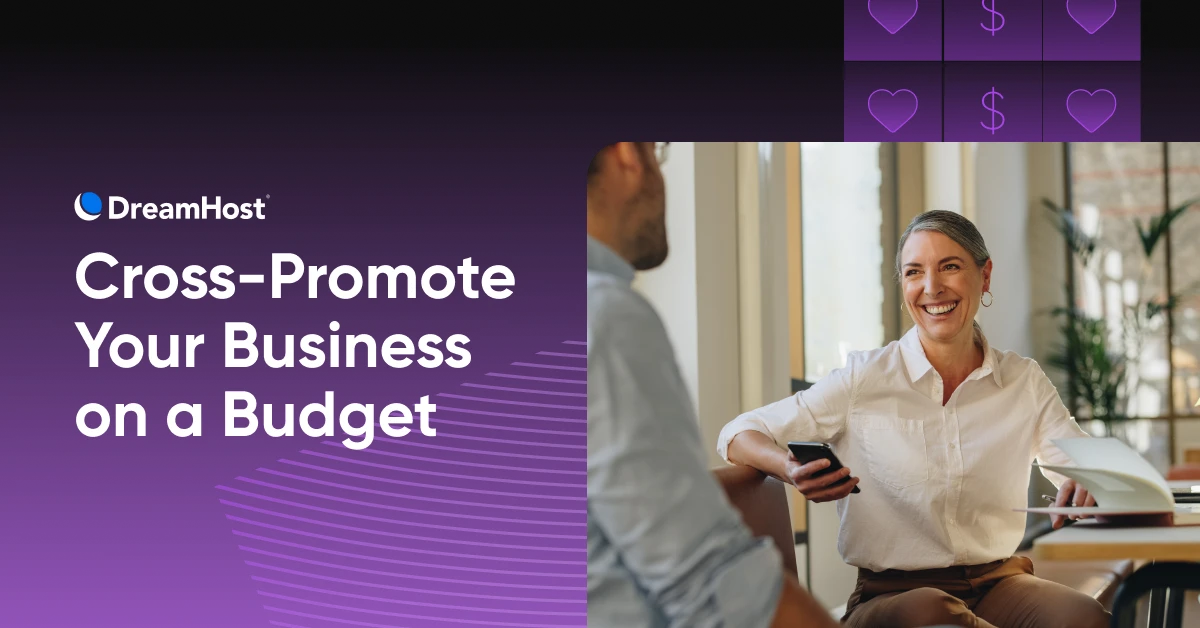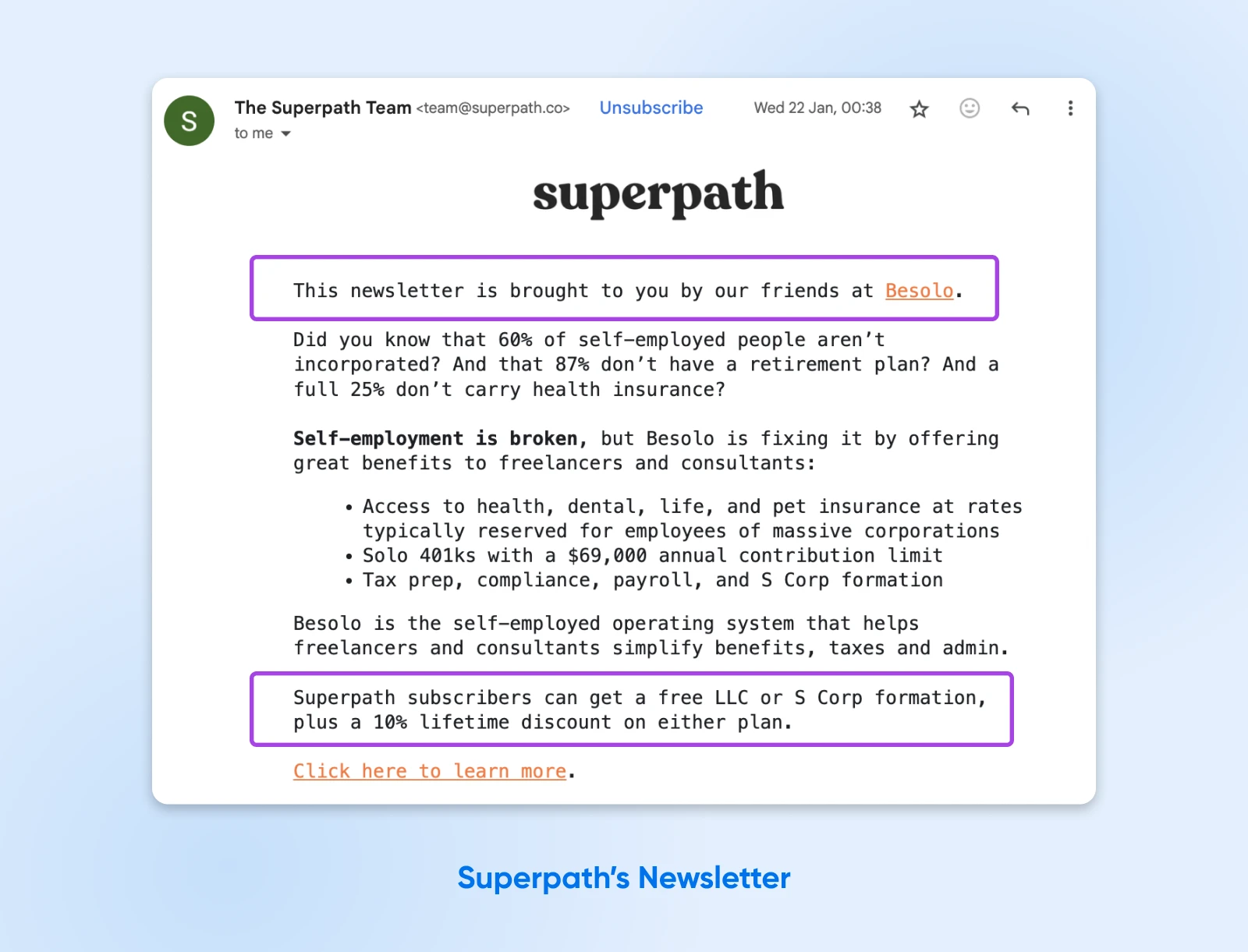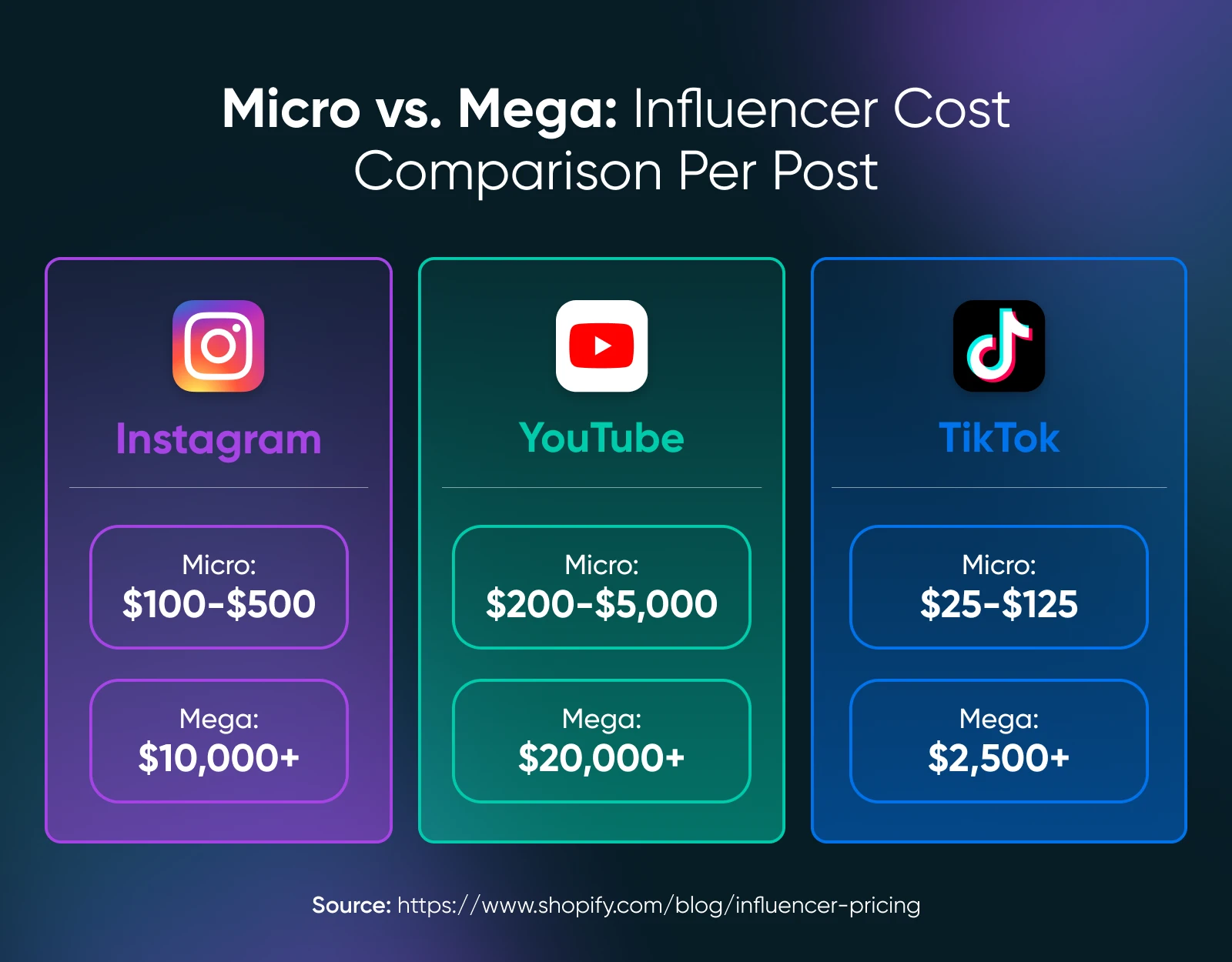8 Budget-Friendly Cross-Promotion Strategies – DreamHost

What do chicken and moisturizer have in common?
In 2021, an Indonesian beauty brand, Dear Me Beauty, launched a skincare line with KFC. Not a joke. Not a fever dream. An actual, real-world collaboration that made people stop scrolling and say, “Wait, what?”
Thankfully, the creams didn’t smell like fried chicken…

Dear Me Beauty, a tiny brand most people had never heard of, hijacked global media attention. KFC, a multinational food chain, suddenly became cool to an audience that wasn’t in their orbit.
In the big bad world of marketing, small brands typically get crushed. Buried under advertising budgets they can’t match. Invisible in a sea of corporate noise.
And big brands typically get boring. Predictable. Soul-crushingly safe.
Cross-promotion lets you grow your audience without paying more for ads.
So, how do you get this right?
Cross-promotion is a marketing strategy where two brands with complementary audiences team up to create an experience, product, or service.
Alas, most brands miss the point. They think cross-promotion is just tagging someone else on Instagram, or hoping for a share.
At its core, cross-promotion is psychological — it’s about trust. When people see two brands they like working together, they feel good about buying in. It sparks curiosity.
And when customers get curious, they pay attention.
The Four-Fold Benefits of Cross-Promotion Marketing
Companies that use cross-channel marketing keep twice as many customers. They also boost sales by nearly 300% compared to those that stick to just one channel.
Here’s why cross-promotion pays off so clearly.
Budgets are tight, competition’s fierce, and nobody wants to see another boring ad.
So here are six clever, cost-effective ideas to cross-promote your small business:
1. Launch a Limited-Time Combo Product
People love a good mash-up. Team up with another local business to create something unexpected.
Like what, you say?
- A boutique candle shop partners with a local bakery to make “cupcake-scented candles,” complete with actual cupcake coupons inside.
- A craft brewery collaborates with a nearby ice cream parlor to launch “Beer Float Nights,” featuring beer-infused ice cream.
- A coffee roaster and an ice cream parlor create “Cold Brew Caramel Swirl,” available only for a month.
A real-life partnership that rivals fried chicken and skincare — Van Gogh does Pokémon. Yes, you read that right. The Van Gogh Museum decided to throw a curveball and slapped Pikachu into some post-impressionist landscapes.
That stuff broke the internet, literally crashed their site. And their cross-promotion campaign was expectedly adorable:
Best Practices:
- Find the peanut butter to your jelly! Don’t pick a partner exactly like you. Instead, find a brand that complements yours but plays in a different sandbox.
- Keep it genuinely limited-time (think days or weeks, not months): Scarcity pushes customers to act fast, but only if it feels authentic.
- Don’t forget to cross-promote actively on social media platforms: Tagging, sharing behind-the-scenes content, and encouraging customers to post their own experiences multiplies the impact without extra cost.
2. Swap Email Newsletter Features (Without Being Spammy)
Cross-promote your brands in each other’s email newsletters. Keep it casual and valuable, not sales-y. Something like:
“Hey, our friends at Green Leaf Tea make incredible loose-leaf blends. If you’re enjoying our gourmet cookies, their teas pair perfectly. Check them out, and tell them we sent you!”
You reach fresh and wider audiences without spending extra cash or being pushy. It’s authentic, conversational, and helpful.
Take a look at how Superpath, a career resource for content marketers, effortlessly plugs Besolo and offers a Superpath-only discount for the platform:

Best Practices
- Make your newsletter shoutouts conversational: Like you’re recommending a good friend, not advertising.
- Keep it casual and short: Customers should feel like they’re getting a genuine tip, not another sales pitch.
- Offer something genuinely useful: Discounts, freebies, or helpful recommendations. The more natural it feels, the better it works.
3. Swap Freebies and Coupons in Online Orders
Here’s a ridiculously easy cross-promo trick: sneak a little surprise into each other’s online orders. People love unexpected gifts — it’s like finding extra fries at the bottom of the bag.
Each brand taps into an audience they might not have reached otherwise. For example:
- A boutique clothing brand teams up with a local café. Every online clothing order arrives with a coupon for a free coffee or pastry at the café. And in return, the café adds discount codes for your shop to their deliveries.
- A stationery brand partners with a local tea shop, placing tea samples and discount cards in notebook orders. Customers get a cozy surprise, and both businesses win new fans.
Best Practices
- Keep freebies small but delightful: You don’t need extravagance, just a thoughtful touch.
- Encourage customers to share their surprises online (hashtags help!): It’s word-of-mouth marketing that feels totally natural.
4. Collaborate on Community Causes
Doing good feels great, especially when it gives your brand a genuine boost. Pick a cause your community cares deeply about, then pair up with another local business to make a real impact.
Maybe a pet supplies shop and a local brewery team up to raise money for an animal shelter.
They may:
- Host a joint fundraiser event
- Sell special branded items together (e.g., a limited-run pet-themed craft beer)
- Promote each other while genuinely helping the community

Best Practices
- Start with local: Identify a specific, local community need that aligns with your business’s values. Don’t try to solve global problems; focus on your neighborhood.
- Create a tangible offering: Develop a specific product, service, or event that people can participate in to support the cause. For example, a “donate a coat, get a coffee” drive during winter.
- Leverage existing platforms: Use your existing social media, email lists, and physical locations to promote the collaboration.
5. Develop Integrated Loyalty Programs
Customers love feeling like they’re getting more than just a product. But honestly, traditional loyalty programs are kind of a snooze: punch a card, get a free coffee. Yawn.
Real customer loyalty is about creating an ecosystem so compelling that customers can’t imagine doing business anywhere else.
For example, when a coffee shop teams up with a co-working space, you’re not choosing between coffee and a workspace. Suddenly, you’re buying into an entire lifestyle. Free coffee. Networking events. Workspace credits. This evolves from a transaction to a community.
Also, 90% of loyalty program owners reported positive returns on their programs, with an average return on investment (ROI) of 4.8x.
Best Practices
- Think in terms of an “ecosystem”: Consider the customer’s daily routines, needs, and aspirations to identify complementary businesses or services that align with your customer’s lifestyle.
- Focus on value alignment: Customers are more likely to participate in programs that mirror their own values. If the partners focus on sustainability, the rewards should also reflect sustainable practices.
- Create an exciting launch marketing campaign: Use social media, email marketing, and in-store promotions to reach your target audience.
6. Partner With Micro-Influencers
Micro-influencers aren’t selling to millions. They’re speaking directly to hundreds, sometimes thousands, of deeply engaged followers who hang on their every word.
Macro-influencers with massive followings hit a bland 5% engagement rate. Meanwhile, micro-influencers crush it with 7% to 20% engagement for a fraction of the price.

Say a local running store partners with a micro-influencer who posts about fitness and running tips. Together, they create a “Weekend Runner’s Starter Kit,” including shoes, a hydration pack, and personalized running playlists curated by the influencer. The influencer shares their experience prepping for a local marathon using the kit.
Followers see someone relatable using the products authentically, trust it more, and jump on board.
You don’t need celebrity reach, you need real connections. Micro-influencers have those in spades.
BTW, we compiled a big, beautiful guide to working with micro-influencers as a small business owner: how to avoid mistakes, find the perfect fit, and track metrics that matter.
7. Jump on Podcasts Together
Podcasts are booming right now. So, why not tap into this without paying a dime? Teaming up on podcasts gets your brand noticed without being pushy, and it’s way more fun than running another ad.
Here’s how you could do it.
- Guest spots and interviews: Team up with a business-related podcast or local influencer for a joint episode.
- Co-host an episode or series: Say you run a boutique clothing shop. Partner with a nearby hairstylist for a short podcast series on easy style tips or local fashion trends.
- Sponsor exchanges (without the fees): Exchange “sponsored” shoutouts in your podcast or social media. It doesn’t cost anything. A fitness coach podcast mentions your smoothie shop (“These smoothies got me through marathon training”) while you tell your smoothie fans to check out the coach’s podcast for tips. It’s authentic, casual, and easy.
Look no further than the true crime genre to find plenty of examples of cross-promotion. The podcast Cults, for instance, often partners with theme-adjacent series like Conspiracy Theories.

Best Practices
- Try “audio postcards”: Create short audio postcards, where each business records a short audio segment, as if they’re sending a postcard from their location. This can include ambient sounds and a short message.
- Experiment with podcast-only discounts: Offer exclusive discounts or promotions that are only available to listeners of both podcasts. Use unique promo codes or URLs to track results.
- Create audio case studies: Put together audio case studies to show how you and your cross-promotion partner have helped real customers.
💡Pro Tip: Try a dedicated cross-promotional podcast research tool like Rephonic to track your collaborations and reach your target audience more quickly.
8. Host a “Takeover Day” on Social Media
Instead of another boring Instagram post, let someone else take the reins. Swap Instagram accounts or TikTok profiles with a complementary business for a day. Customers get fresh content, and you both get in front of a new audience.
Creative takeover ideas
- Day in the life: Show followers what a typical day looks like at your partner’s business.
- Ask me anything: Host a live Q&A session with your partner’s team.
- Product swap: Showcase each other’s products or services in creative ways.
- Location exchange: If both businesses have physical locations, do a crossover where each business shows the other’s location.
- Skill swap: One business shows the followers a skill the other business uses.
Best Practices
- Think about your hashtags: Use relevant hashtags to increase visibility. Consistently use a unique hashtag for the takeover across LinkedIn, Instagram, Twitter, or wherever else your audience hangs out.
- Use platform-specific best practices: When hosting a takeover on Instagram, use geolocation tags and interactive Stories features like polls and quizzes. For Facebook, promote your collaboration in relevant Facebook groups and make good use of the Live feature.
You need your brand’s complementary half, not a clone. Let’s find the peanut butter to your jelly.
Step 1: Define Your Needs
- Create a detailed customer persona using tools like HubSpot’s Make My Persona or Xtensio. Don’t just list demographics; understand their pain points, interests, and where they spend their time online and offline.
- Clearly outline your goals for the partnership. What specific outcomes do you want to achieve? (e.g., increase website traffic by 10%, generate 100+ leads, boost sales of best-selling product).
Step 2: Identify Potential Partners
- Deep dive into your customer data. What else do they buy? What are their hobbies?
- List businesses that serve your customers without being direct competitors.
- Verify that their audience aligns with yours. Check social media, website traffic, and demographics.
Step 3: Validate Audience Overlap
- Use social listening tools like Mention or Brandwatch to monitor potential partners’ online presence and audience engagement.
- Look for shared interests and communities.
- If possible, directly survey your customers to see other brands they like.
Step 4: Reach Out!
- Craft a personalized email or message outlining your cross-promotion idea. Use email outreach tools like Mailchimp to personalize and automate outreach.
- Highlight the specific benefits for their audience.
- Offer to start with a small test collaboration before committing to a large campaign.

Marketing is brutal. Ad costs keep climbing, attention spans keep shrinking, and competition abounds.
But cross-promotion is the backdoor to growth most brands completely miss.
You don’t need to outspend competitors when you can partner with them. You don’t need to shout louder when you can whisper to an audience already listening.
So here’s your challenge: find your unlikely match. Create something worth talking about. Two audiences become one bigger community.
After all, chicken and moisturizer had nothing in common…until someone decided they did.

Pro Services – Marketing
Get More Visitors, Grow Your Business
Our marketing experts will help you earn more traffic and convert more website visitors so you can focus on running your business.
See More


